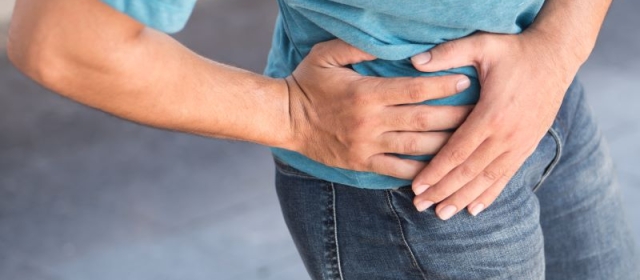
Research Summaries
Upcoming Events

Introduction
Peyronie’s disease (PD) is a condition that involves plaques forming under the skin of the penis, causing penile abnormalities like indentations or curvature. While most often people with PD experience curvature that is upward or to one side, sometimes individuals have a ventral or downward curvature.

Introduction
An inflatable penile prosthesis (IPP) is a medical device used to treat erectile dysfunction. It is surgically implanted in the penis to help men achieve and maintain an erection suitable for sexual activity.
The device has inflatable cylinders that can be filled with fluid to create an erection by utilizing a pump surgically placed in the scrotum. When the erection is no longer needed, a valve is used to release the fluid back into a reservoir where it remains until it needs to be used again.
Although IPP is effective and has high satisfaction rates, little is known about its use during anal intercourse, particularly in men who have sex with men. A new study aims to determine the maximum force exerted during anal penetration to provide valuable information for clinicians and patients considering IPPs. Understanding this mechanical stress is crucial for ensuring device effectiveness and patient satisfaction.
Methods
Researchers, with Institutional Review Board approval, studied 6 men who have sex with men engaging in anal intercourse. Using a hand-held force gauge device, they measured forces applied to a silicone phallus simulating the average male size during anal penetration. Participants were positioned with flexed hips and their elbows resting on a table, and the device was inserted into the anal canal for five measurements. The force gauge was calibrated, sterilized, and covered with a condom before each use. Descriptive statistics were calculated for demographic and survey data.
Results
The study included participants aged 52 to 64, all identifying as white gay men. They reported varying frequencies of receptive anal intercourse. The average maximum force during anal penetration was 26.5 Newtons (2.7 kilograms), with individual forces ranging from 16.1 to 51.7 Newtons (1.64 to 5.27 kilograms). Participants engaging less often in receptive anal intercourse tended to have higher forces (41.6 N or 4.24 kg) than those with more frequent engagement (25.7 N or 2.62 kg). These findings offer insights into the forces associated with anal intercourse in this population.
Discussion & Conclusion
The study compared forces during anal penetration to existing data on penile prostheses, providing insight into the mechanical aspects. Previous studies on vaginal penetration were referenced, citing forces between 500-1500 grams. The study measured forces in a sample of men with inflatable penile prostheses (IPP) during anal penetration, recording a median force of 26.5 Newtons (2.7 kilograms). This force exceeded historical values for vaginal penetration, suggesting the importance of careful IPP inflation for those engaging in anal intercourse. However, limitations and other confounders, including a small sample size and variations in study methodologies, were acknowledged. The study highlights the need for further research on safe IPP use during anal intercourse for better patient counseling.

Introduction
Penile cancer, though rare, affects over 36,000 individuals globally each year, with increasing incidence in some countries including the United States, the United Kingdom, and Norway. Surgical approaches have evolved from radical amputation to organ-sparing surgery, aiming to preserve the penis.

Introduction
Infertility is defined as the inability to conceive a baby after a year (12 months) of trying with regular and unprotected sexual intercourse. It is a significant issue, especially for women, causing psychological stress due to expensive treatments, uncertainty, and social pressure. Infertility can also harm a woman’s self-esteem, sexual confidence, and overall well-being, thereby increasing the risk of sexual problems.



